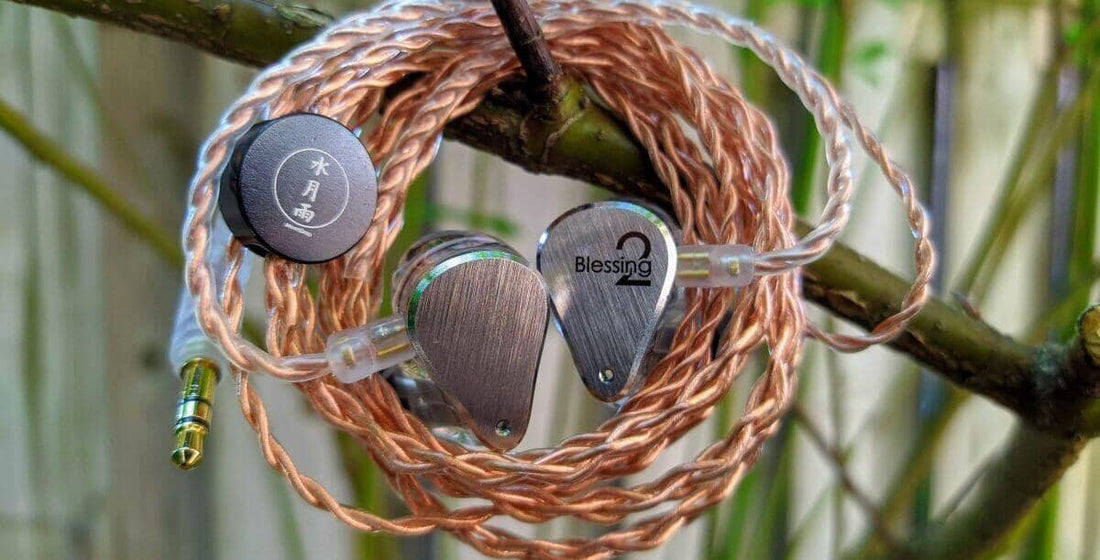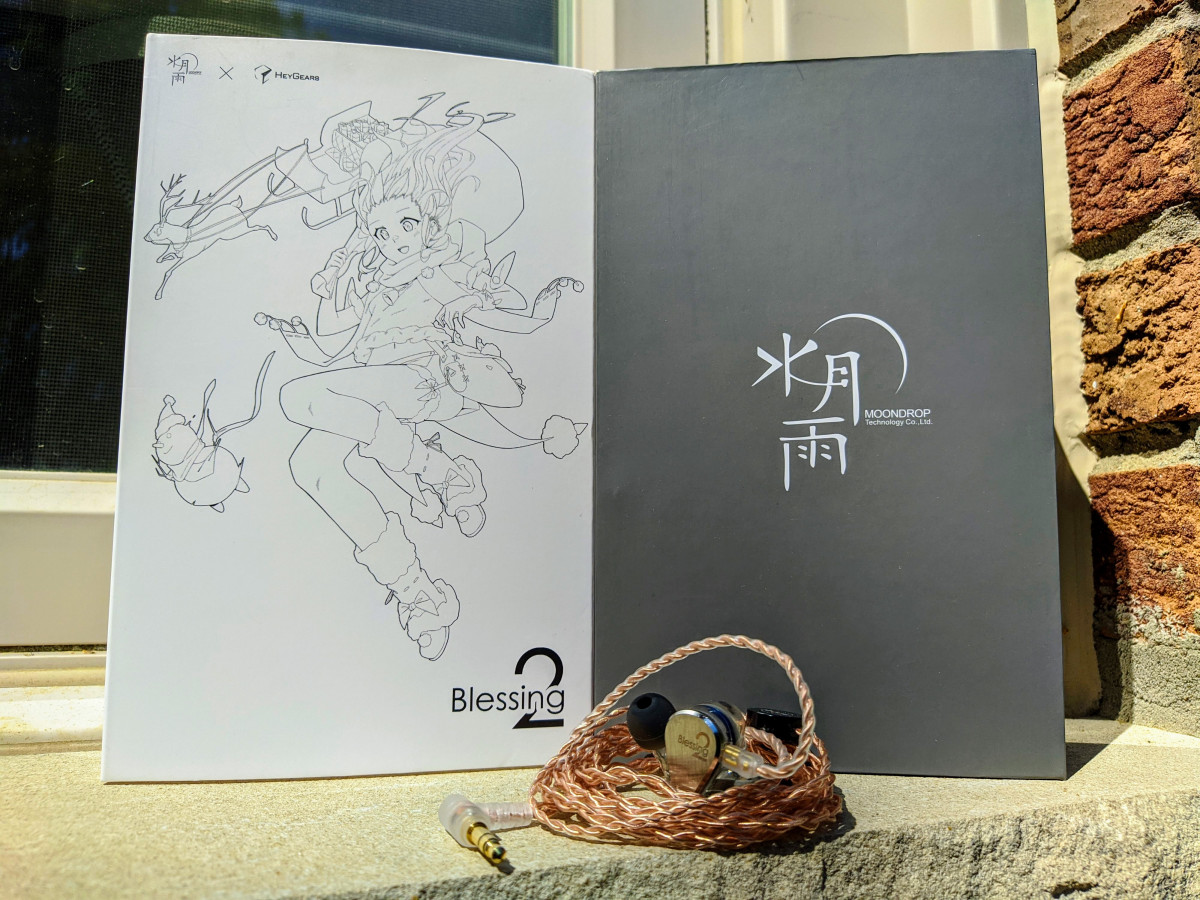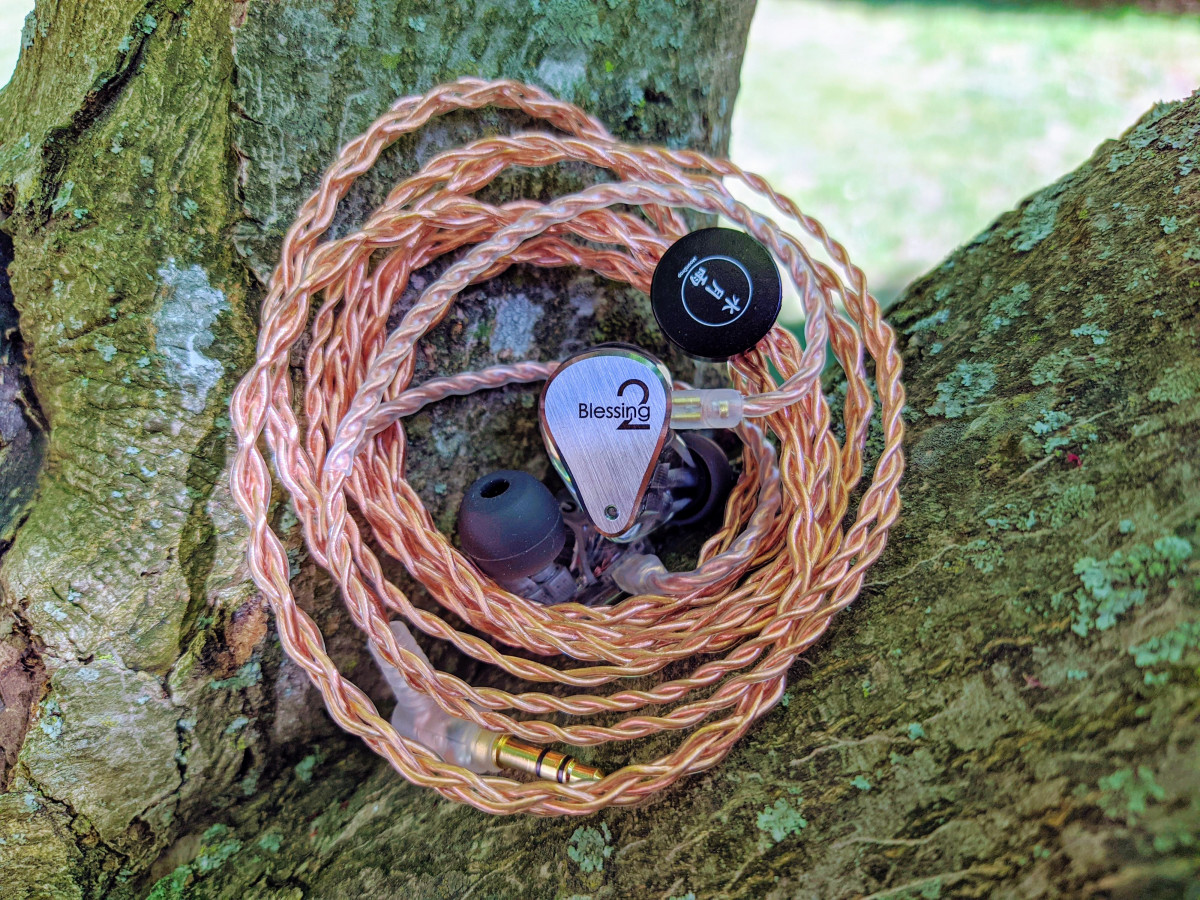MoonDrop Blessing 2 Review - A Retrospective of Excellence

Review written by @Fc-Construct
For those familiar with the IEM scene, the MoonDrop Blessing 2 needs no introduction. For those getting started with in-ear monitors, chances are you’ve stumbled across this article after hearing constant recommendations. In the modern mid-fi IEM landscape saturated with a rotating door of flavour-of-the-months, the MoonDrop Blessing 2 has achieved what is possibly the highest honour: relevancy.
Despite the near universal acclaim the MoonDrop Blessing 2 has garnered since its release over a year ago, I hadn’t had the opportunity to listen to them until recently. Having read the audio discourse surrounding this IEM’s rise to fame, it’s clear that the B2’s has developed a reputation that precedes itself. In this review, I’ll take a critical look at the MoonDrop Blessing 2 and see for myself where it stands in the face of that reputation.
For those unaware, MoonDrop Blessing 2 (B2s) are a hybrid IEM goes for $320 at MSRP. It boasts a single dynamic driver (DD) with four balanced armatures (BAs), giving it a 1 DD + 4 BA configuration. MoonDrop has developed their own tuning target, the VDSF target response, which the B2s have been tuned towards. In my opinion, realistically speaking, the VDSF target is just a fancy way of saying that MoonDrop doesn’t subscribe to the popular Harman target and prefers instead to pursue its own path. For what its worth, MoonDrop’s product lineup has been quite successful with this tuning strategy, even if they have started sounding quite similar to each other.
What’s in the Box
The MoonDrop Blessing 2 comes in a simplistic black-and-white box featuring an anime-style line art depicting a young genderbent version of Santa. If you’re wondering “… why?”, let’s just say that their founder has a certain affinity for Japanese culture and the MoonDrop’s marketing strategy consequently involves anime mascots. In fact, when buying the Blessing 2, it has a number of mascot options that you can get engraved right into its metallic faceplate for $30 extra. To take it a step further, they even offer the option for custom engravings. A quick Google Image search will reveal a wide variety of creative decisions that others have proudly chosen for their own B2s. On the note of faceplates though: be aware that there have been a couple complaints where the faceplates have fallen off the shell. While very rare, I do want to point it out for the sake of transparency.
Inside the box is a carrying case and a cardboard box containing tips and other accessories – 6 pairs of silicon tips in standard S, M, and L sizes, a 2-pin cable, and an airline adapter to be exact. The tips are fairly normal except for having a rather wide bore at the base to accommodate the B2’s large nozzle. The cable is a 4-core cable with pre-molded earhooks and an L-shaped jack. It’s light, pliable, with a little bit of cable memory and noise. Certainly more than serviceable without real need for a 3rd party cable for increased ergonomics.

The IEMs themselves have a resin shell with the aforementioned metal faceplate. The shells actually have a bit of a heft to them as they’re fully resin filled. In addition to that, the B2s infamously boasts a 7 mm nozzle. For reference, most IEMs are about 4-5 mm. While a couple millimetres may not seem like much, this larger nozzle size will present a problem for a number of people. Personally, I was prepared for the worst but found that the angle of the nozzle and overall ergonomics of the B2’s shell works surprisingly well for me. However, the wide nozzle did cause soreness to my ear. Though it has subsided over the time I’ve had it, if you’re particularly sensitive to comfort, you’ll definitely want to demo the B2s before committing. Additionally, of note is the presence of nozzle filters on the B2. A thin black ring of glue holds the filters to the resin nozzle. While I appreciate the idea, the execution is lacking. Every time I remove the tips to clean them, it disrupts the bond and eventually, the filters came right off with the tips. Thankfully, the filter doesn’t do anything acoustically and are there to prevent wax from falling in the nozzle. This isn’t really a problem as many other IEMs with resin shells don’t have a filter either and the occasional cleaning will take care of that.
Sound
My first impressions of the B2 were… well, positive. To be honest, I wasn’t a hundred percent sure of what to expect. When audio gear gets as hyped up as the B2 is, it’s hard to have a sense of reality. In a boring twist, the B2s sound very good though not mind-blowing. It has an agreeable tuning that’s neutral with a minor bass boost. I find it has a rather raw timbre with a slight sheen of artificialness that doesn’t sound totally natural to me. The B2’s resolution and note definition are seriously impressive for the price and are the true highlight of this IEM for me.
The following is how the Moondrop Blessing 2 Measures on the GRAS RA0402 coupler. This dampens the coupler resonance peak that shows up at around 8khz that's commonly found with other measurement rigs, making it more readable in the treble.

Bass
As a hybrid IEM, the B2’s DD is meant to handle the low-end frequencies. Generally speaking, this is often seen as a good thing as BAs tend to produce a less satisfying bass response due to so-called BA timbre. In the case of the B2s, I have mixed feelings. On one hand, the bass is unquestionably DD especially when compared side to side with all-BA IEMs. However, I’m not as impressed with the quality. I find it rather shallow and dry without much texture. This may be a function of its frequency response in its modest 4 dB of bass elevation at 60 Hz or a sign that I’m slowly transforming into a basshead but the B2’s bass lacks depth to me, especially when listening to instruments like the low toms and kick. Listening to the drums, I hear the initial attack and rebound of the drum head but not the full resonance of the drum itself. It’s as if the B2s somehow constrain themselves from fully indulging in the richness of the low end. While this doesn’t always appear in every song, this lack of depth is certainly noticeable in tracks that depend on a full low-end presence for its musicality.
That said, midbass note definition, separation, and resolution is excellent. The B2 very much a midbass focused IEM that punches instead of booms. While I do find it slightly dry and textureless as mentioned above, the trade-off is a clean and precise sound. It’s great for tracks with an abundance of notes clamouring for space in this region, calling forward notes that may otherwise be missed with lesser IEM.
Mids
The mids of any IEM or headphone is a careful interplay between the lower and upper mids and the B2s are no exception. Being nitpicky, I think B2s have just a touch too much upper mids for its tonal balance. While it positions vocals clearly forward without being too shouty, I find that the excess upper treble energy causes the strum of acoustic guitars to sound shallow. As such, despite graphing with a hint of gain in the lower mids, the B2s sound lean to my ears. Lean, but not thin. If you listen to strong clear vocals with a lot of upper mids energy, the B2s will perform excellently. If you listen to vocalists that really emphasize the rich body of their voice, the B2s will still sound great; they’re just less optimized for that sort of performance in comparison.
It is also in the upper mids (and lower treble) where the rawness of the B2s presents itself to me. By that I mean that the B2s don’t completely sound smooth or refined. They have a slight edginess to them, a rawness that’s perhaps comes as a result of its technical prowess. To me, the timbre of the B2s sounds slightly artificial. I don’t think this is necessarily bad. This rawness combined with the upper mids energy sometimes enhances the crunchy tone of an electric guitar. But at other times, violins and pianos pop out a little more than they should with a touch of rawness that marginally detracts from the experience.
Treble
The lower treble of the B2s continue straight from the energy of the upper mids. Its enough that I’d say the Blessing 2 leans bright. When I think treble, I mostly focus on the hats and cymbals. There’s a strong upfront crash when the drumstick attacks the hats and cymbals that leads to an imbalance as the trailing natural decay is sacrificed. Combined with the rawness of the B2, this manifests as a brittle sort of sound for its treble. In all fairness to the B2, given how nuanced and varied these instruments can be, the hats and cymbals test is one of the hardest to get perfectly right for any piece of gear. Having a somewhat brittle treble is still vastly better than all the other ways I’ve heard IEMs warp the delicate sound of the treble.
Where the B2s gain a lot of ground is, once again, in its lower treble resolution. Like the midbass, the B2’s pushes forward a lot of notes that generally get obscured. Depending on your past IEM experience, it can really add fresh layer of detail that compels you to explore your music library to try and hear what you may have missed in the past. And if you’re concerned over sibilance or harsh treble peaks, I don’t detect that from the B2s. Though I will admit I do have a high tolerance for treble.
Presentation
The soundstage and imaging of the B2’s is respectable. It has an above average width that its imaging makes good use of. The stereo image comfortably stretches to the outer edge of my ears. However, it has little height and depth. Like most IEMs, music is presented on a seemingly flat plane.
Resolution and note definition are what makes the B2’s stand apart from the rest of the competition. It’s better than pretty much anything in the <$500 range I’ve heard, with maybe the exception of the Etymotic ER4. Its good enough to give IEMs much more expensive than it a very good run for their money. I find it a noticeable step up from the vast majority of IEMs out there. Instrument separation and layering is similarly great though the lack of soundstage depth does hamper the sense of space that generally accompanies these qualities.

Should You Buy It?
Yes. Despite everything that I’ve nitpicked in the B2, it’s undeniably a fantastic IEM at a phenomenal price. The technical prowess it brings to the table for $320 is seriously impressive. Generally speaking, I try to look for an X-factor when it comes to gear. What is it that gives an IEM or headphone staying power? What attributes keep it from being forgotten when the next flavor of the month shows up? While I don’t think the B2s have that magical X-factor, its combination of solid tuning, great technical performance, and downright reasonable price have given it a commanding presence in the mid-fi IEM world. While newer IEMs are getting better and better at cracking the tuning code ( e.g. the SeeAudio Yume I reviewed here ), progress on improvements to technical performance has remained stagnant. As such, the B2s have secured for themselves and edge that won’t going to be easy for challengers to overcome.
To put it another way, it would be easier to give reasons why someone SHOULDN’T get the B2s. I can think of three. The first is fit. There’s simply no getting around the fact that the nozzles are much larger than average and if the fit isn’t comfortable, that will squash any enjoyment. The second is the tuning. If you’re looking for something with an abundance of bass or lower mids warmth, the B2s won’t scratch that itch. Finally, for those who are extremely sensitive to timbre and swear that the only headphones that sound right to you are the Sennheiser HD6X0, the B2s might not be for you. The rawness in its upper mids might not be the smooth experience you’re looking for.
In conclusion, the MoonDrop Blessing 2 lives up to its lofty reputation. It really is a very strong IEM in the current audio landscape. Having now listened to it, it’s easy to see why they’re constantly recommended and found on top of many ranking lists, and even more so when you take its relatively low price into account. Though a year late, it has been a pleasure to finally have reviewed this landmark IEM.
On a final note, some of you reading this may have noticed that I’ve failed to mention the MoonDrop Blessing 2 Dusk or compared the B2s with other IEMs. This is intentional as next week I’ll be taking a look at the Dusks and be doing a proper comparison review to the B2s and other popular IEMs out there.
